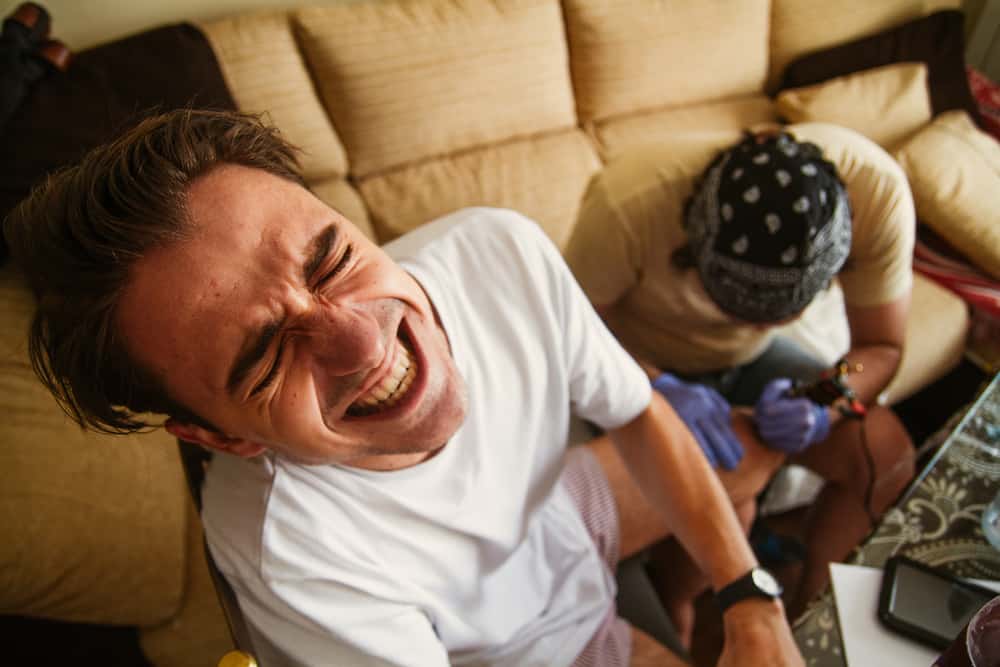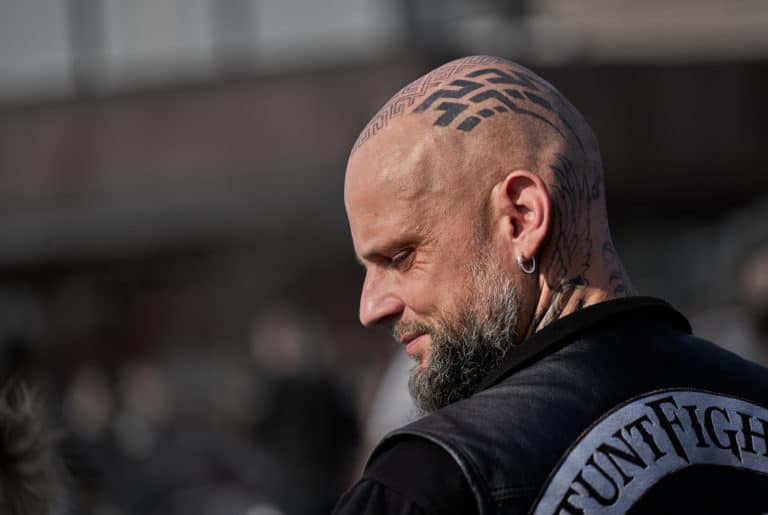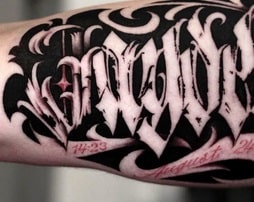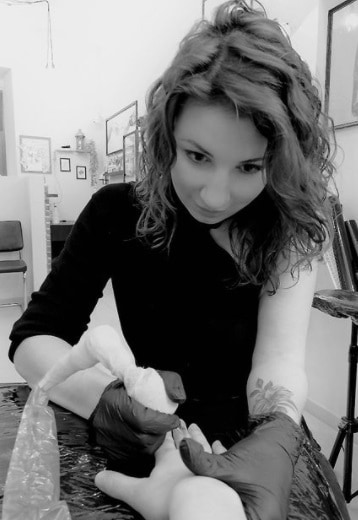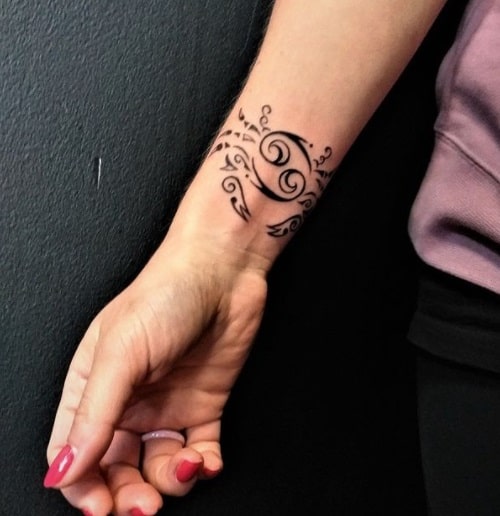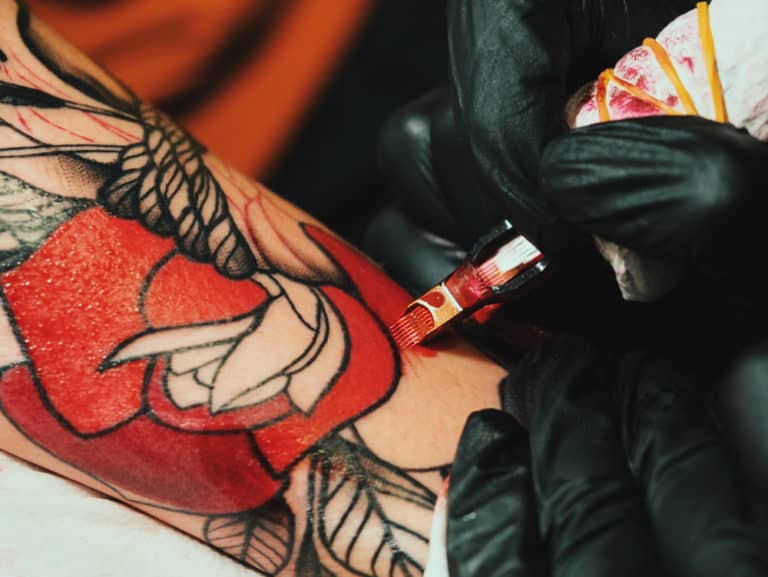Where Are The Most Painful Places To Get A Tattoo?
If you have never gotten a tattoo, you may be pretty anxious about how much a tattoo will hurt. As a first-timer, you may be nervous about how much pain you will endure when getting your first tattoo, but you also know some people say certain places hurt more than others. So, where are the most painful places to get a tattoo?
Some of the most painful areas to get a tattoo includes the ribcage, the armpit, the face, the head, and the inner thigh. However, there are many reasons why a specific place may be more painful than another, and different kinds of pain may vary based on your tolerance.
There are many things to consider that may cause you more or less pain in some regions of your body when getting a tattoo. Before you get a tattoo, it is essential to know and understand why certain places are more sensitive than others, and if you know your pain tolerance and your body well, you may even be able to pick a spot that doesn’t affect you as much as it would others.
The Most Painful Places To Receive A Tattoo
While getting a tattoo is always painful, a few factors can affect the level of pain when tattooing certain areas of the body. The amount of fat, nerve endings, and the thickness of the skin on the site you are tattooing can influence how painful the process can be.
Below are some of the most painful areas to get a tattoo:
Pain Levels When Tattooing Your Ribcage
Many people with multiple tattoos will agree that a ribcage tattoo is one of the most painful tattoos you can get.
The pain level for a ribcage tattoo can range from extreme to severe pain because the skin covering your ribs is extremely thin, which means that there is much less fat for cushioning. The thinner your skin is, the more sensitive the area will be, and when coupled with the fact that the rib area is right above your rib bones, getting a ribcage tattoo can be quite an uncomfortable experience.
There is also the added fact that whenever you take a breath, the skin getting tattooed will stretch and move, making the pain in this area a lot more intense.
Armpit Tattoos And Pain Levels
Although the armpit may sound like a surprising place to get a tattoo, many people are still interested in getting one.
The armpit is one of the more painful places for a tattoo. It is not uncommon for tattoo artists to refuse or advise against getting an armpit tattoo, as the pain can sometimes be too much to handle. The intense amount of pain in this area is due to the presence of your axillary nerve.
Armpit tattoos are also extremely painful because of the lymph nodes under your arm. Lymph nodes help your body filter out harmful substances; however, they are also susceptible to pain, so getting a tattoo in this area can sometimes be a 9/10 on the pain scale.
It can also be quite an uncomfortable tattooing position for most people, as you must sit with your arm held up, which can cause cramping. The sensitive skin around the armpit and lymph nodes can also be ticklish and sensitive to pain, so you may find it hard to sit still while your tattoo artist works if you have sensitive skin or are ticklish by nature.
Inner Thigh Tattoo Pain Levels
While the inside of your thigh may seem like an excellent place to get a tattoo, as there is a lot of fat cushioning, this is unfortunately not the case.
Inner thigh tattoos can be extremely painful while getting the tattoo and during the healing period. This is because the inside of your thighs get hidden away and are relatively protected. The skin of your inner thigh is exceptionally soft and sensitive, which could make getting a tattoo in this area quite painful.
Another reason that makes inner thigh tattoos one of the most painful tattoos is because the freshly tattooed skin will not be able to heal as quickly and will constantly suffer rubbing and friction from your other thigh as you walk or move. The newly worked on and exposed skin is extremely sensitive in the days after getting a tattoo, and on the inner thigh, unfortunately, there is no way to leave it to heal.
Head And Face Tattoo Pain Levels
Head and face tattoos also get rated as some of the most painful tattoos you can get. The reason is that the skin on your head and face is relatively thin, and there is not a lot of fat cushioning in this area.
Another reason head and face tattoos hurt is that your head contains more nerve endings. Tattooing in this area can be painful, as the skin is easily irritated. Some reports indicate that the vibration and noise levels of getting a head or face tattoo makes it a more uncomfortable experience, which can contribute to psychological pain on top of the physical pain.
Inner Wrist Tattoo And Pain Levels
The skin surrounding your inner wrist is relatively thin, and there is hardly any fat for cushioning on the inside of your wrist, which makes tattooing in this area an uncomfortably painful experience. There is also an abundance of nerve endings on the inside of the wrist, creating quite a painful tattooing experience.
Ankle And Foot Tattoo Pain Levels
Tattooing the area around your feet and ankles can prove to be a harrowing experience. The reason is that the feet and ankles have fragile skin, with little to no fat to cushion the needle, and the area is directly above the bone. All these factors make an ankle or foot an uncomfortable and painful experience since the needles may hit bone in addition to the already sensitive skin.
Behind The Knee Tattoo And Pain Levels
One part of the body that you should avoid getting tattooed if you are sensitive to pain is behind the knees.
The skin behind your knees can be pretty loose and stretchy; in addition, the area behind the knee has a lot of nerve endings, making for a rather painful tattooing experience. The shock of having a needle poked into the skin behind the knee can also cause you to jerk your leg involuntarily, adding to the pain.
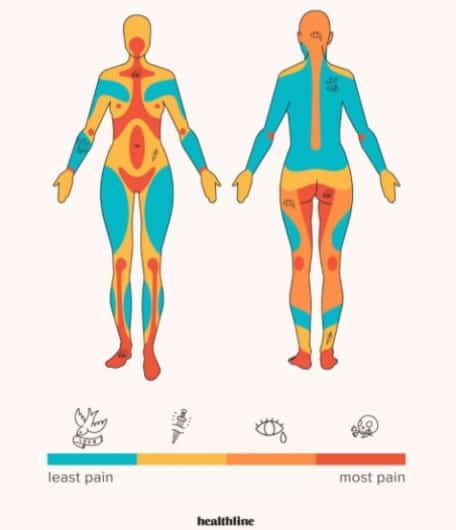
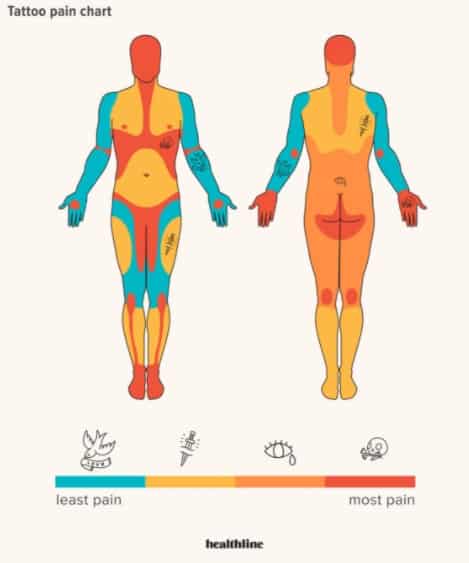
Factors That Can Affect Pain Levels While Getting A Tattoo
The pain level from getting a tattoo can vary depending on a few factors, including a person’s pain threshold. Some people naturally have higher pain tolerance, making the tattooing process much more comfortable or a little easier to handle.
How Your Age Affects Tattoo Pain
Older adults may experience less pain when getting a tattoo, as research suggests that the aging process can decrease people’s sensitivity to pain. There is no conclusive reason why this happens, although researchers believe that the part of the brain that processes pain decreases in size the older you get.
How Your Weight Affects Tattoo Pain
People with a higher weight may experience more pain when getting a tattoo because the skin has stretched to accommodate more fat it may become looser. Loose skin is more susceptible to hurt, causing the pain to get heightened in heavier people.
How Your Biological Sex Affects Tattoo Pain
Biologically female people may experience a more significant pain intensity while getting a tattoo. They may also have a lower pain threshold, due to chemical and physical differences in their bodies, compared to biologically male people.
Tattooing Over Scar Tissue
Scar tissue is more sensitive than normal skin, so getting a cover-up tattoo for any scar you have will undoubtedly be on the higher end of the pain scale. Because scar tissue is skin that has healed, it can be extremely painful to tattoo, and depending on the type of scar, there may be nerve damage which can create overly sensitive skin.
Your Experience Level And Psychological Expectation
Studies show that people who have multiple tattoos and are somewhat used to the tattooing process have a higher pain threshold for getting a tattoo than people who have never gotten a tattoo.
In addition, your anxiety levels before getting a tattoo and your expectation of the pain levels could affect how painful the tattooing process actually is. People who expect a tattoo to be excruciatingly painful may feel a higher level of pain than those who are not worried about how much it will hurt.
Types Of Pain When Getting A Tattoo
There are different types of pain when getting a tattoo, with many people reporting that some sensations hurt more than others. To be fully prepared for a painful tattoo, you will need to know the different kinds of pain you may feel to know what to expect during the tattooing process.
Scratching Pain When Getting A Tattoo
One of the more common sensations people may experience when getting a tattoo is scratching pain.
This pain can feel like an intense scratch dragging across the skin, similar to how a cat scratch would feel. The initial scratching pain may not feel very intense; however, if your artist is working in the same place for a while, the pain can worsen over time.
Getting a tattoo with shading will also hurt more as multiple needles are used instead of a single needle. Using many needles can exacerbate and intensify the scratching pain you may feel.
Sharp Stinging Pain When Getting A Tattoo
Sharp stinging pain is well known when getting a tattoo, even more, if your tattoo artist uses a single needle. It may feel like multiple bee stings over the area the tattoo is getting applied to. The sharp, stinging pain is generally really intense, with many people reporting they struggle not to pull away from the needle.
This pain usually gets felt when the tattoo artist is working on the outline of your tattoo or adding fine details. Areas of the body with tighter and thinner skin are more prone to feeling sharp stinging pain, such as the inner wrist or bicep.
Burning Pain When Getting A Tattoo
People generally feel a burning pain during a large extensive tattoo that takes a couple of hours to complete. Burning pain is similar to having something hot pressed against your skin for a while.
After some time, the skin in the area getting tattooed may become raw and irritated because of the repeated trauma it undergoes from a tattoo needle piercing the same skin multiple times. The burning pain is also more commonly felt in fatty areas with lots of cushioning.
Vibrating Pain When Getting A Tattoo
In certain areas where the skin is fragile, and you are getting a tattoo directly over bone, you may feel vibrating pain. As the needle repeatedly pierces your skin directly above the bone, the nerves in your bones may detect a particular sensation from the vibrations, which is usually common when the needle is moving at an extremely high speed.
When this happens, you may experience a type of vibrating pain. And while this pain is not intensely painful, it can be pretty uncomfortable for some people.
Can You Reduce The Pain While Getting A Tattoo?
While tattoos are always going to hurt and be uncomfortable, there are a few things you can do to try and minimize the pain of getting a tattoo. However, before you try these methods, you must speak to your artist and ask what they are alright with and what you should avoid. Your tattoo artist will always have the best advice.
Avoid The Most Painful Areas To Get A Tattoo
If you’re worried about tattoo pain, the most obvious way to minimize how much it will hurt is by avoiding the areas of the body that are the most painful places for getting a tattoo. Any site with thin skin or directly over bone will hurt a lot. Avoid areas such as the ribcage, ankles, feet, inner wrist, inner thigh, and the back of the knee.
Avoid Large Detailed Tattoos
For a tattoo to be relatively pain-free, it must be quick. The longer it takes to finish your tattoo, the more it will hurt as the skin becomes raw and irritated from repeatedly getting pierced by a needle. Stick to smaller, simpler designs if you want to avoid excessive pain. It is advisable to steer clear of larger prints with intensive details and heavy shading or colored tattoos.
Bring A Friend To Your Tattoo Appointment
A lot of the time, a tattoo hurts because we are focusing on the pain. Bringing a friend to your appointment will give you someone to talk to, which can help take your mind off the tattoo and ease the pain. Holding someone’s hand can also help as you will be able to feel something physical instead of focusing on the needle piercing your skin.
Speak To Your Tattoo Artist About Numbing Creams
If you have sensitive skin, which can make a regular tattoo extremely painful, you can always talk to your tattoo artist about numbing creams. However, some artists will not allow you to use numbing cream as they may believe the pain is part of the tattooing process, or they have tried and tested numbing creams, which have not worked.
Conclusion
There are several reasons you may go through pain during a tattoo session, some of which are easier to avoid than others. It is usually best to ask your artist for advice and tell them if you have irregularly sensitive skin. However, knowing which places are the most painful for getting a tattoo is an excellent place to start, and if you feel the need, you should avoid them.
Some of my favorite designs, tattoo books, and aftercare products, selected for you
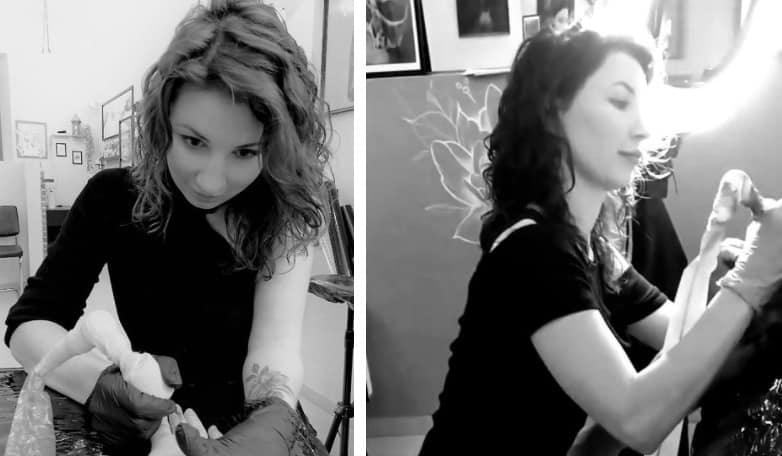
Thank you for reading my article, I hope that you have found it helpful. If you would have trouble finding ideas for your tattoo, wonder what is meaning of design that you have found or what to buy for aftercare, to make sure that your tattoo will be healing quickly and easily, here are some of my favorite products in one place, hope that this will also help.
Design and tattoo ideas
For some ideas you can have a look at those 3 books with hundreds of designs that I use with my clients, they are available on Amazon for Kindle or in classic, paper version (links below):
- Great Book of Tattoo Designs, Revised Edition: More than 500 Body Art Designs (Fox Chapel Publishing) Fantasy, Celtic, Floral, Wildlife, and Symbol Designs for the Skin by Lora Irish
- The Big Book of Small Tattoos – Vol.1: 400 small original tattoos for women and men by Roberto Gemori
- Tiny Tattoos: Over 1,000 Small Inspirational Artworks by Rebecca Vincent.
Tattoo meaning
If you would like to read more about the meaning of different tattoo styles and designs before you will decide what you would like to have, I can recommend a book that was really useful for me when I was starting my tattoo adventure – it’s “Conscious Ink: The Hidden Meaning of Tattoos” by Lisa Barretta (through the link you can find it on Amazon for around $10).
Tattoo aftercare
The skin at the tattoo site often dries out. To prevent it and speed up healing for my clients, I usually recommend one of those tattoo aftercare balms (you can find them on Amazon):
References
- https://www.healthline.com/health/body-modification/pain-tattoos-chart#minimizing-pain
- https://www.insider.com/guides/health/tattoo-pain-chart
- https://www.cosmopolitan.com/uk/body/health/a12054452/tattoo-pain-most-painful-places-body/
- https://www.businessinsider.in/science/health/news/thinking-of-a-tattoo-here-are-the-most-and-least-painful-spots-to-get-inked/articleshow/84621975.cms
- https://www.cosmopolitan.com/style-beauty/beauty/advice/a7174/what-to-know-before-getting-tattoos/
- https://www.wikihow.com/Deal-With-Tattoo-Pain
- https://www.savedtattoo.com/tattooing-over-a-scar/#:~:text=After%20the%20scars%20heal%2C%20the,tattoo%20on%20skin%2Dremoval%20scars.
- https://authoritytattoo.com/armpit-tattoo-pain/

